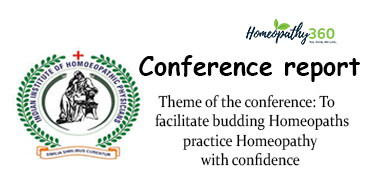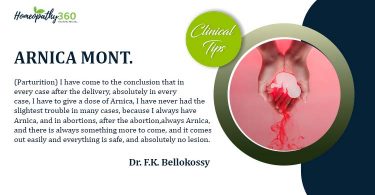Abstract
The phenomena of palpitations can be described as awareness about one’s heart beat that can cause mild to severe discomfort to the patient. As homoeopathic physicians, it is important to address the issue regarding misdiagnosis or ill-treatment in cases presenting with palpitations. The causes of palpitations can vary from minor to some life-threatening conditions. Therefore, it becomes necessary to form an appropriate protocol to approach such cases. Many homoeopathic literatures provide extensive research on different drugs and their indications in palpitations. This article formulates a constructive therapeutic approach using various Materia medica references.
Keywords: Palpitations, arrhythmia
Introduction
Palpitations can be defined as rapid pulsations and irregular beating of heart (1) . There are many conditions known to manifest as palpitations which include cardiac causes (43%), psychiatric causes (31%), miscellaneous (10%) and unknown (16%) (2).
The cardiac causes are known to be the most life-threatening cause of palpitations (1),hence, should not be ignored by the physician. Reaching a diagnosis in a case of palpitations holds utmost importance so the best treatment could be suggested to the patient. The approach towards palpitation cases starts with a thorough case-taking. History taking includes asking the patient about associated complaints (like syncope, chest pain, anxiety etc.), frequency and duration of palpitations, history of any cardiac illness, history of any drug ingestion (3). For better understanding, the physician can ask the patient to tap out the rhythm (3). A general physical examination should be performed, apart from this, special emphasis should be given on assessing the pulse and cardiovascular system examination. Identifying the rhythm as regularly irregular or irregularly irregular can help form the differential diagnosis and further decide the course of action (3). A 12 lead ECG is the first line investigation to be done in all cases of palpitations (3,4). In case the arrhythmia is not identified on the spot, Holter monitoring can be thought of.
The homoeopathic literature has no less mentions of palpitations. The works of following authors are reviewed for this article to construct a therapeutic approach: E. A. Farrington; William H. Burt; J. H. Clarke; Richard Hughes; William Boericke.
Homoeopathic Remedies:
- ACONITE: “Toxic doses of aconite paralyze directly the nervous ganglia of the heart, producing at first a reduction of the number of heart pulsations and then an increased action, with evident loss of muscular power” (5).“There are congestions of both heart and lungs, palpitation with anxiety, cardiac oppression, and even syncope” (6). Numbness and tingling accompanying symptom with heart affection. Farrington mentions to only give this medicine in uncomplicated hypertrophy- “hypertrophy from valvular disease may do great harm” (6). Worse by walking (6). Pulse hard, strong, full with great thirst (5). Great anguish; anxiety about heart (5).Temporal and carotid arteries felt when sitting (7).
- ARSENICUM ALBUM: cannot lie down, worse on going upstairs, dyspnoea with great anguish (5). Pulse rapid weak, imperceptible, intermittent, thread like or entirely gone (5). Worse on night and worse on lying on back (6).“Produces lesions such as endocarditis, hypertrophy, fatty granulation and degeneration, with pain, dyspnea and palpitation of the heart” (5).“The heart beat is too strong, it is visible to the person standing by and is audible to the patient himself” (6). Pulse may be accelerated and weak. Pulse more rapid in morning (7).
- COFFEA: ailment from slightest excitement. “Slightest excitement is sufficient to bring on violent palpitations” (8). “Dr. Meyhoffer says coffea is to the nerves of heart what Cactus is to its muscle” (8). “In the first stages of toxaemia, the pulse rate is very greatly increased as is also the arterial pressure” (8). Violent irregular palpitations especially after excessive joy or surprise (7).
- IBERIS: Palpitation and irregular action (9). “Controls vascular excitement in hypertrophy with thickening of the cardiac walls” (7). Palpitations with vertigo and choking in the throat. Pulse full irregular, intermittent. Worse on least motion and warm room (7). Violent palpitations induced by slightest exertion, or by laughing or coughing (7).
- DIGITALIS: “The least movement produces violent palpitations of the heart; intermitting the third, fifth, or seventh beat” (5). Slow, irregular or intermittent pulse, excited by the least movement (5). Dr. Hale says “it is indicated in all the varieties of hypertrophy with dilatation whatever the cause may be, or in any condition of heart where its muscular power is especially deficient, with quick, weak, irregular, or intermittent pulse; increased or deficient action of heart, with deficient force of impulse” (5). “Indescribable uneasiness in the cardiac region, which maybe expressed a sense of oppression or tightness about the heart, or as an uneasy feeling with weakness and numbness in left arm” (6). “The pulse is often slower than beating of heart, this happens when heart beats so imperfectly that some of its pulse waves are not transmitted appreciably to the radial artery at the wrist” (6). Failure of compensation, especially when auricular fibrillation has set in (7)
- GELSEMIUM: Dr. H C Wood says: “the action of moderate doses of Gelsemium upon the circulation is not very marked. That in toxic amounts it depresses both the pulse rate and pressure” (5). “On going to sleep the patient is suddenly aroused by a feeling that the heart will stop beating. He feels that the heart would cease to beat if he did not move about. Here the heart muscle is in a weakened state, and there is a sort of instinct on the part of the person to move about to stimulate it to act”(5)
- VERATRUM VIRIDE: As mentioned by Burt, it was found that small doses first reduce the force, without much lessening the pulsations. “In full therapeutic doses, it lowers the pulse rate, both by a direct action on the muscle and by stimulating the inhibitory nerves; it diminishes the force of heart beat by a direct influence on cardiac muscle, and produces a general vaso-motor paralysis, more or less complete, according to the size of the dose” (5). Paroxysms of auricular fibrillation (7).
- PHOSPHORUS: palpitations with anxiety, worse in the evening and morning on waking (5). Violent palpitations on slight motion (5). Fatty degeneration of heart and arterial walls (5). “Anxiety about the heart, associated with nausea and a peculiar sensation of hunger, somewhat relieved by eating, distressing her, even in bed, for hours” (5). “Its symptoms point more to the bad results that follow disease of the right heart than the disease of the left; in a word, venous stagnation” (6). Suited for all forms of palpitations, palpitation from emotion; from motion; and also from rush of blood to the chest (6). Phosphorus has more symptoms of right side affections of heart, which is venous stagnation, leading to puffiness of face particularly under eyelids. Whereas Arsenic album has more symptoms of left side of heart, more oppression of chest in breathing, more orthopnoea, and more anasarca or general dropsy (6).Worse on lying on left side, sensation of warmth in heart (7).
- RHUSTOX: palpitations of the heart following over exertion (6).“When Rhustox is the remedy in heart disease, you usually find accompanying the disorder a sensation of numbness of the left arm and shoulder” (6). Weak feeling in chest, as if the heart muscle were tired, and this worse after any exertion (6). Trembling and palpitations when sitting still (7).
References
| 1. | Goyal A, Robinson KJ, Katta S, Sanchack KE. Palpitations.: StatPearls publishing; 2023. |
| 2. | Loscalzo J, Fauci A, Kasper D, Hauser S, Longo D, Jameson JL. Harrison’s principles of internal medicine. 21st ed.: McGraw-Hill Education; 2022. |
| 3. | Dover AR, Innes JA, Fairhurst K, editors. Macleod’s clinical examination. 14th ed.: Elsevier – Health Sciences Division; 2018. |
| 4. | Abbott AV. Diagnostic approach to palpitations. American family physician. 2005 February; 71(4): 743-750. |
| 5. | Burt WH. Physiological Materia Medica. 3rd ed. NewDelhi: B. Jain publishers; 2003. |
| 6. | Farrington EA. Clinical Materia Medica. 4th ed. New Delhi: B. Jain publishers; 1995. |
| 7. | Boericke W. Boericke’s new manual of Homoeopathic Materia medica with repertory. 3rd ed. New Delhi: B. Jain publishers; 2023. |
| 8. | Hughes R. A manual of pharmacodynamics. 6th ed. New Delhi: B. Jain publishers; 2019. |
| 9. | Clarcke JH. The Prescriber. 3rd ed. New Delhi: B. Jain publishers; 2006. |
About Author – Dr. Sanchita Lamba (MD SCHOLAR),
Department of practice of medicine, Government Homoeopathic medical college and Hospital, Bhopal, India



